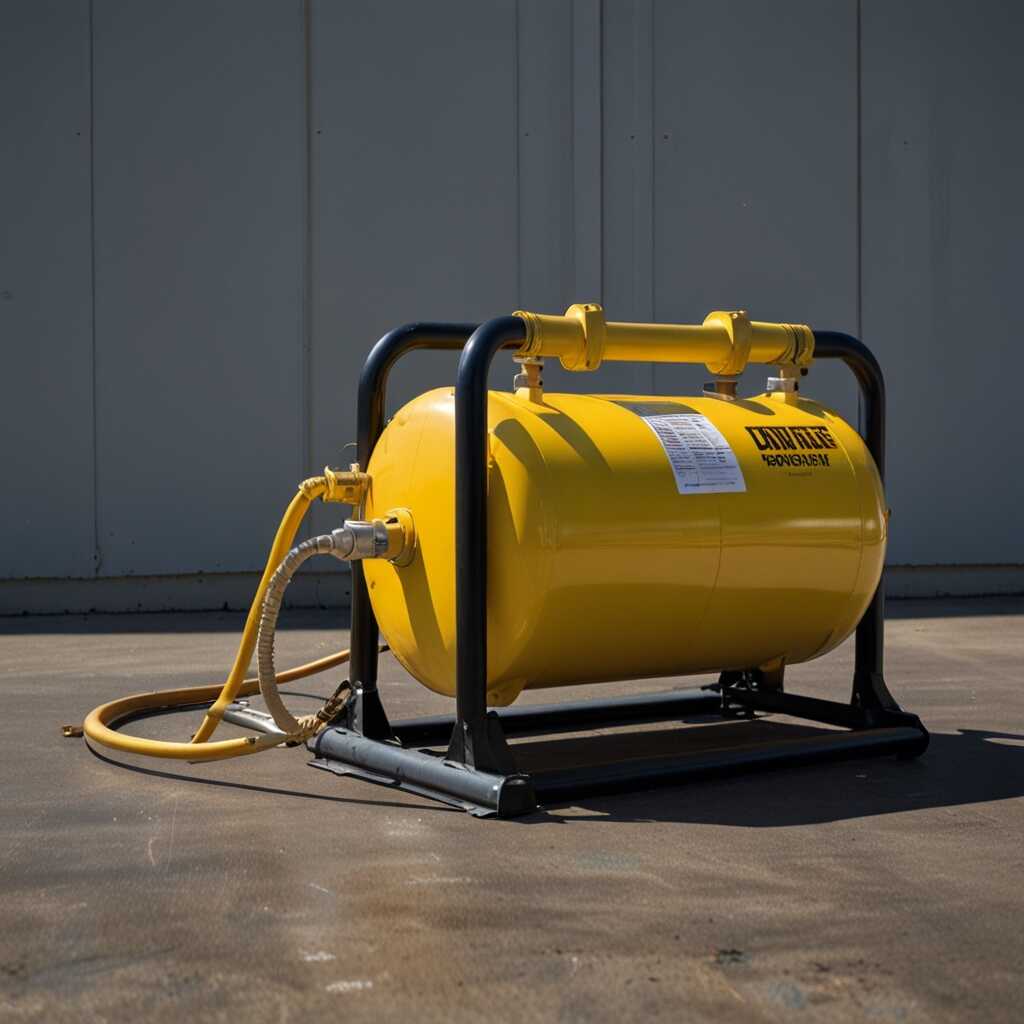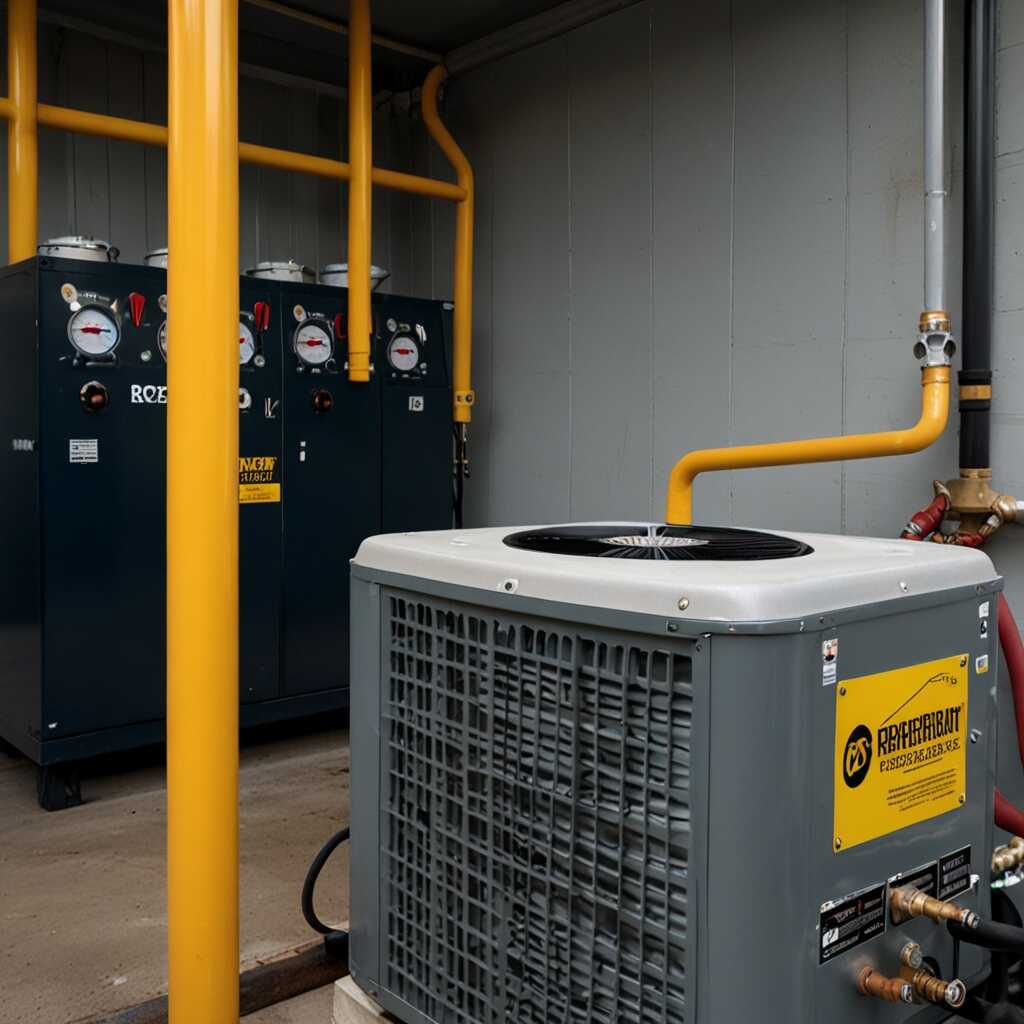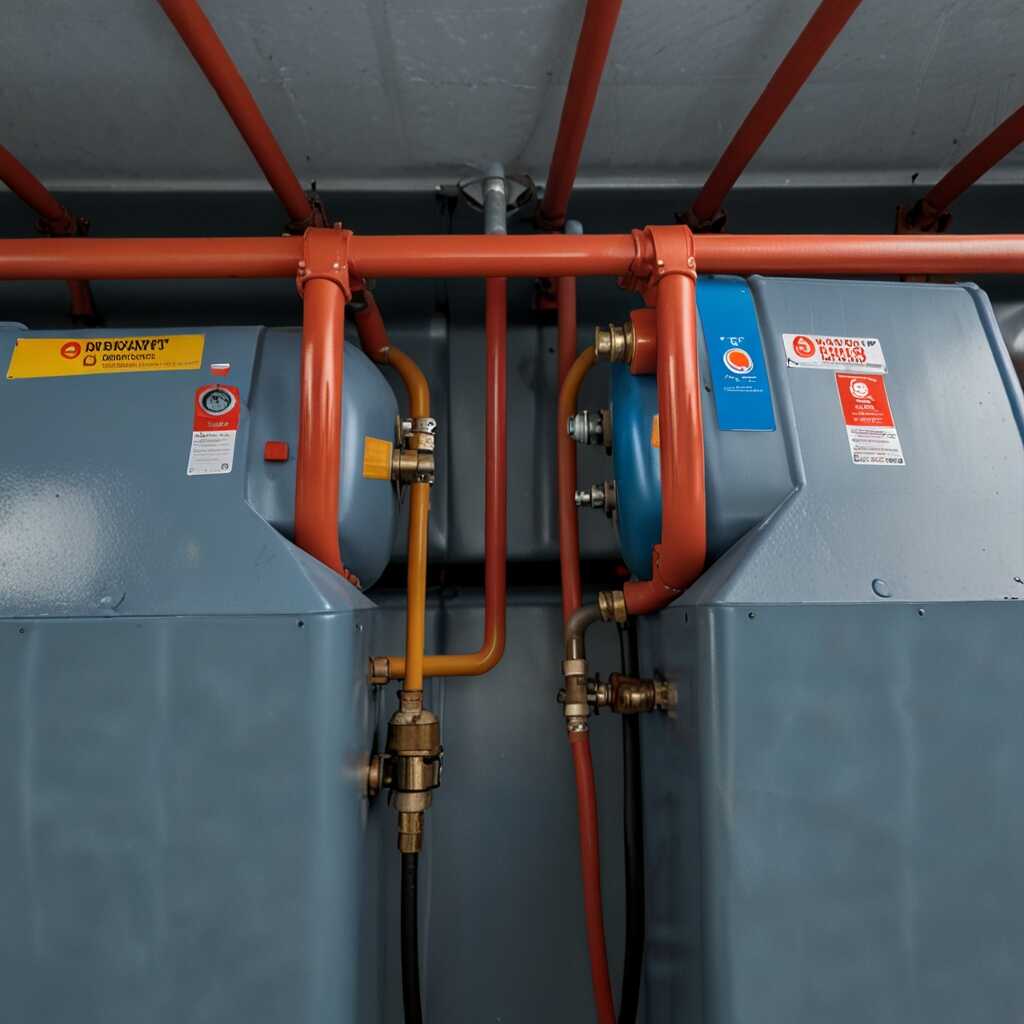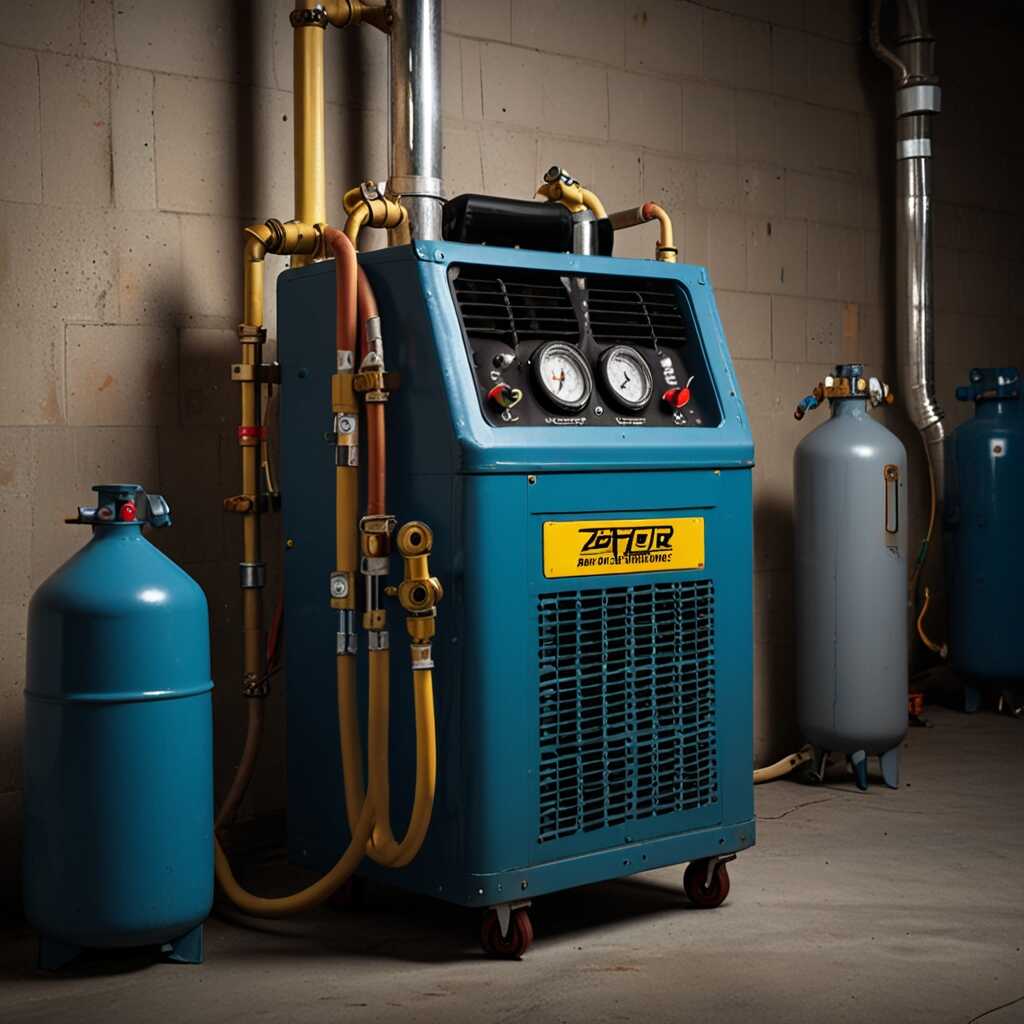Refrigerant recovery machines play a crucial role in handling specialized refrigerants in vehicles. These machines are essential for safely recovering and recycling refrigerants, which can have significant environmental impacts if not managed correctly. At Refrigerant Recovery Pro, we provide expert insights on how these machines operate with various refrigerants, ensuring compliance with regulations. Understanding the technical aspects and best practices for refrigerant recovery is vital for HVAC professionals and automotive technicians alike.
Fundamentals of Refrigerant Recovery in Automotive Systems
Understanding refrigerant recovery practices is vital for automotive technicians. Proper refrigerant recovery ensures safety, efficiency, and environmental protection. Automotive systems use various specialized refrigerants, each requiring tested recovery methods. HFO, R-1234yf, and R-134a are commonly used, and knowing how to manage these specialized refrigerants is crucial. Effective recovery increases the reliability of your service. Testing and experience in refrigerant recovery can maximize recovery rates, which typically average around 95%. This level of efficiency is essential for regulatory compliance.
Understanding Specialized Refrigerants in Automotive Applications
Specialized refrigerants, such as HFO, require precise management to meet environmental standards. Automotive refrigerant recovery machines are designed to handle specific refrigerants, ensuring you remain compliant with regulations. For instance, HFO-1234yf systems must meet stricter recovery performance standards due to their low global warming potential. Efficient recovery processes enhance the sustainability of automotive services while maintaining performance. Quality recovery machines provide the necessary features to accommodate these refrigerants, including compatibility and efficiency in recovery rates. Regular reviews and testing of your recovery equipment helps sustain operational excellence.
Common Specialized Refrigerants in Modern Vehicles
Modern vehicles utilize various specialized refrigerants such as R-134a, R-1234yf, and R-12. R-134a is commonly found in older vehicles, while R-1234yf is increasingly popular due to its lower global warming potential. Each refrigerant type has different properties affecting efficiency and performance. For example, R-1234yf provides better cooling efficiency than R-134a, making it suitable for newer automotive systems. Additionally, refrigerants like R-12 are being phased out due to high environmental impact. Proper understanding of these specialized refrigerants helps automotive technicians ensure compliance with regulations and enhance vehicle performance.
Comparative Analysis of Refrigerant Types
R-134a performs reliably but has a global warming potential of 1,430. R-1234yf has a significantly lower impact with a GWP of 4, making it the preferred choice for 2025 and beyond vehicles. The transition to R-1234yf enhances energy efficiency and reduces emissions, aligning with environmental standards. Technicians must test performance against manufacturers’ specifications to ensure optimal results. Understanding the distinct properties of each refrigerant equips technicians with the knowledge to select the best refrigerant for the application, thereby improving overall air conditioning performance in vehicles.

Operational Mechanisms of Recovery Machines
Refrigerant recovery machines are designed to manage various specialized refrigerants effectively. These machines utilize advanced technology to ensure reliable performance across different types of refrigerants used in automotive systems. Features such as dual-stage compressors and high-efficiency condensers enhance the recovery process. These components work together to improve the overall efficiency and effectiveness of the machines, enabling them to handle various refrigerants, such as R-134a or R-1234yf. Testing and reliability assessments confirm that modern recovery machines can efficiently manage between 10 to 15 specialized refrigerants during their operational lifetime.
Key Features Enhancing Efficiency in Recovery Machines
Recovery machines include several key features that enhance their efficiency. One essential feature is the automatic oil return system, which ensures that oil is not lost during the recovery process. This design helps maintain optimal performance and prolongs the life of both the refrigerant and the machine. Additionally, many recovery machines now offer built-in refrigerant identifiers, providing data on the type of refrigerant being processed. This feature helps technicians ensure compliance with regulations and improve recovery efficiency. The use of lightweight materials and durable construction further enhances the reliability and performance of these machines, making them a good investment for HVAC professionals.
Numerical Insights into Specialized Refrigerants Management
- Automotive refrigerant recovery machines can process up to 80% of recoverable refrigerants.
- Most recovery machines operate effectively at pressures between 50 to 200 psi.
- Over 60% of vehicles manufactured post-2015 use specialized refrigerants like HFOs.
- Recovery machines typically require up to 30 minutes for a full refrigerant recovery cycle.
- Technicians can save up to 25% in refrigerant costs with proper recovery practices.
- The average lifespan of a refrigerant recovery machine is around 10 years with proper maintenance.
- Approximately 40% of refrigerants are lost during improper recovery methods, emphasizing the need for specialized machines.

Essential Features of Refrigerant Recovery Equipment
When selecting refrigerant recovery machines, consider essential features like reliability, durability, and efficiency. High-quality refrigerant recovery equipment should handle specialized refrigerant types such as R-134a, R-1234yf, and R-410A effectively. Look for machines designed with robust performance metrics that have been proven through extensive testing and a strong comparison with other devices. Additionally, a recovery machine’s specifications should include the ability to manage multiple refrigerants simultaneously, often ranging from three to five, depending on the model. Refrigerant Recovery Pro highlights machines that deliver excellent performance and ease of use.
Key Specifications for Optimal Performance
Key specifications for optimal performance in refrigerant recovery equipment include recovery rate, maximum vacuum level, and user-friendly interfaces. A good refrigerant recovery machine should provide a recovery rate of at least 0.5 lbs per minute for specialized refrigerants. It’s essential to check the maximum vacuum level, which should be around 25 inHg or lower for efficient performance. User-friendly interfaces enhance convenience, allowing technicians to operate the machine comfortably during recovery tasks. By focusing on these specific features, HVAC professionals can select reliable recovery equipment that meets their needs and improves efficiency.

Strategies for Effective Refrigerant Recovery
Proven strategies for recovering specialized refrigerants include using specific recovery machines designed for various refrigerants. These machines ensure reliability and efficiency, meeting regulatory requirements. Expert insights highlight the importance of regular maintenance and testing of recovery equipment. Addressing issues promptly enhances overall performance. HVAC professionals should consistently review best practices for refrigerant management. Compliance with industry standards is essential for successful recovery procedures. A maximum recovery efficiency percentage often reaches 95%. Using advanced technology can help in achieving this exceptional result.
Enhancing Recovery Processes with Advanced Technology
Advanced technology plays a crucial role in enhancing recovery processes. Dedicated refrigerant recovery machines are engineered for easy operation and high reliability. Features such as automatic shut-off and integrated diagnostics provide users with quality performance. Regular testing of these machines ensures they can handle specialized refrigerants properly. Many recovery units on the market today are designed with safety and compliance in mind. Utilizing such machines helps achieve a high recovery efficiency percentage, making refrigerant management simpler and more effective.
Advantages of Managing Specialized Refrigerants Effectively
- Minimizing environmental impact through efficient refrigerant management.
- Reducing overall operating costs associated with refrigerant purchases.
- Enhancing the safety of technicians by preventing harmful refrigerant exposure.
- Improving compliance with EPA regulations and international standards.
- Extending the lifespan of HVAC and automotive systems through effective maintenance.
- Boosting customer satisfaction by delivering quality repair and service.
- Facilitating quick recovery and maintenance cycles, leading to increased productivity.

Challenges Faced During Refrigerant Recovery
Refrigerant recovery operations face several common challenges. First, technicians may encounter improper refrigerant handling that can lead to leaks and inefficiencies. Second, specialized refrigerants like R134a or R1234yf have unique properties that require specific techniques for safe recovery. This can affect system performance if not managed correctly. Third, the average recovery time varies by refrigerant type; for instance, R134a typically requires about 20 minutes, while newer refrigerants may take longer due to system complexities. Technicians can enhance recovery efficiency by using equipment specifically designed for the refrigerant type. Researching and reviewing past performance data on recovery machines can provide insights into improving operational reliability.
Effective Troubleshooting Tips for Refrigerant Recovery
To address challenges encountered during refrigerant recovery, effective troubleshooting is essential. Techniques include checking for system leaks and ensuring proper connections to the recovery machine. Using a machine compatible with the specific refrigerant enhances processing time and prevents performance issues. Reviewing machinery features will help select the best equipment, ensuring it meets the specific requirements of the refrigerants used. Regular maintenance and testing of your recovery machine improve reliability and efficiency during recovery operations. Technicians should familiarize themselves with the requirements for specialized refrigerants and stay updated on regulatory standards to facilitate proper handling.
Understanding Regulatory Requirements for Refrigerants
Multiple federal regulations, such as the Clean Air Act, govern refrigerant management in vehicles. EPA regulations ensure proper handling and disposal of refrigerants, focusing on minimizing environmental impacts. Complying with these regulatory frameworks helps businesses operate efficiently while avoiding substantial penalties.
Key Regulatory Frameworks for Refrigerants in Automotive Applications
Understanding key regulatory frameworks is essential for automotive technicians and HVAC professionals. The EPA oversees refrigerant management under the Clean Air Act, which includes laws targeting ozone-depleting substances and greenhouse gases. Technicians must be familiar with EPA-approved refrigerants, including R-134a and R-1234yf. Compliance enforcement agencies, including state environmental agencies, ensure adherence to these laws. Staying updated on refrigerant management guidelines and industry standards enhances operational efficiency and environmental responsibility.
Key Brands Offering Solutions for Refrigerant Management
- Identifying brands like Robinair leads to reliable recovery machines known for efficiency.
- Another respected brand, Ritchie Engineering, offers durable units but may lack some advanced features.
- Digitron machines stand out with cutting-edge technology tailored for specialized refrigerants.
- Users appreciate the ease of use from Mastercool products, though they might have lower recovery rates.
- Technicians prefer Yellow Jacket tools for their balance of features and price range.
- Cross-compatibility of products varies; certain brands specialize in specific refrigerants, impacting choice.
- Training and support from manufacturers help technicians maximize machine efficiency and effectiveness.
Emerging Trends in Refrigeration Technology
Recent advancements in refrigerant recovery technology include novel refrigerant management systems that ensure compliance with environmental regulations. Innovations such as advanced detection methods help technicians identify leaks more effectively. Emerging technologies enhance system efficiency, enabling better recovery processes. These advancements are essential for meeting the future demands of the automotive industry, particularly as regulations evolve toward stricter environmental standards by 2025.
Key Innovations Shaping Refrigerant Recovery
Key innovations shaping refrigerant recovery include the introduction of smart recovery machines. These machines utilize IoT technology for real-time monitoring. They can analyze recovery data, providing insights and enhancing operational efficiency. Manufacturers are focusing on devices that can handle various refrigerant types while ensuring compliance with new regulations. Research indicates that these innovations lead to improved performance and reliability in refrigerant management systems. Technicians who leverage these tools can achieve higher recovery rates and better environmental outcomes.